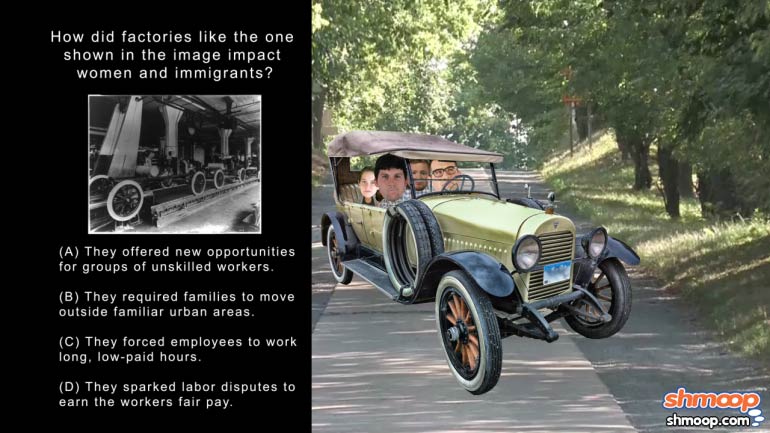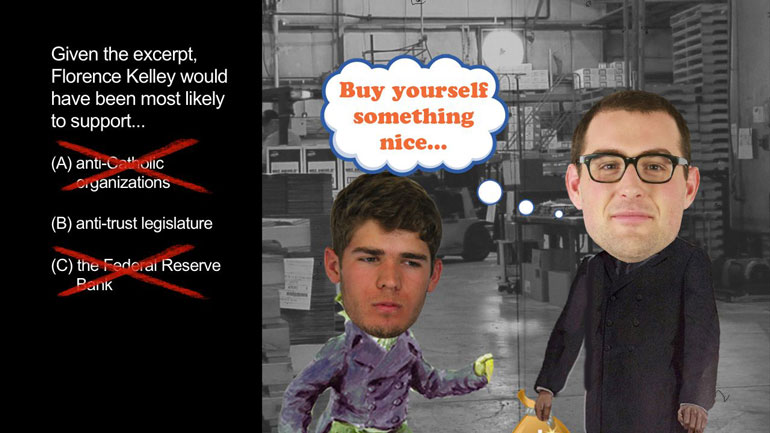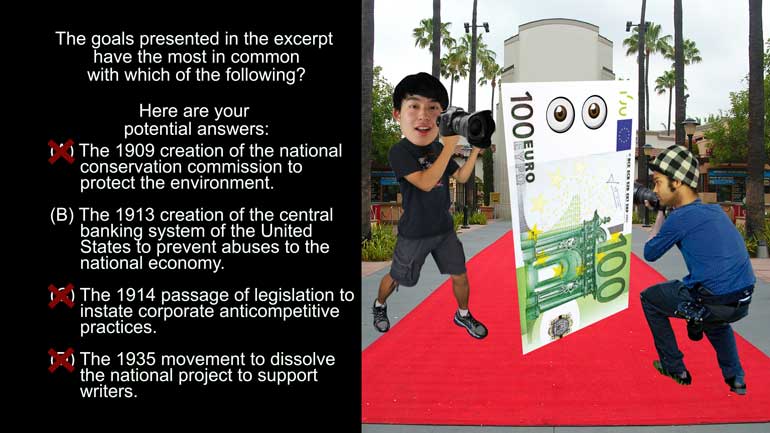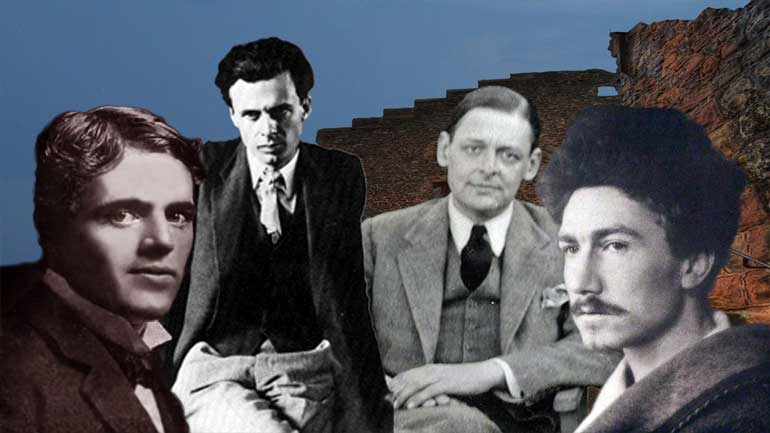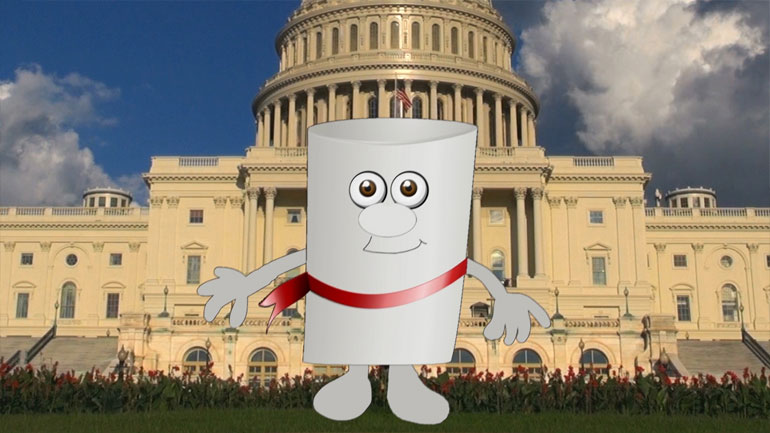ShmoopTube
Where Monty Python meets your 10th grade teacher.
Search Thousands of Shmoop Videos
Transition from a Rural Economy Videos 9 videos
AP U.S. History Diagnostic 18. What shift in the United States economy is represented by the image?
AP U.S. History Exam 2.35. How did factories like the one shown in the image impact women and immigrants?
The appeal of city living has always been strong. Can you figure out why new immigrants chose to live in big cities? Hint: they weren't trying to b...
AP U.S. History Exam 1.20 171 Views
Share It!
Description:
AP U.S. History Exam 1.20. How did the United States expand foreign trade while holding strong to the policy established in the image?
Transcript
- 00:00
[ musical flourish ]
- 00:03
And here's your Shmoop du jour, brought to you by spheres of influence,
- 00:07
the most well-rounded aspect of foreign policy.
- 00:10
[ chuckles ]
- 00:12
All right.
Full Transcript
- 00:15
How did the United States expand foreign trade while holding strong
- 00:18
to the policy established in the image?
- 00:21
And here are your potential answers.
- 00:22
[ dog barks ]
- 00:23
[ mumbles ]
- 00:27
All right, here we go.
- 00:28
Well, the Monroe Doctrine made the U.S. look like the
- 00:31
unfriendliest country on the block,
- 00:33
which made expanding trade a tricky task.
- 00:37
Let's see which answer best describes how the U.S.
- 00:39
managed to keep the good times flowing.
- 00:41
Did the U.S. expand foreign trade while holding strong to the policy in the image
- 00:46
A - by establishing the Roosevelt Corollary?
- 00:49
Huh. The Roosevelt Corollary was a
- 00:52
foreign policy that justified U.S intervention in
- 00:54
other Latin American countries.
- 00:56
So that's a balance of power, not a balance of trade issues.
- 01:00
So cross out A.
- 01:01
Did the U.S. increase foreign trade while maintaining
- 01:04
a commitment to the Monroe Doctrine
- 01:06
B - with the help of allies in the Western Hemisphere?
- 01:10
Well, actually, trade in the Western Hemisphere was almost at a peak,
- 01:14
so the U.S. had to search a little bit further for those new markets.
- 01:17
That knocks out B and C.
- 01:19
Which means that the U.S. expanded foreign trade
- 01:22
while holding strong to the policy in the image D -
- 01:25
through the Open Door Policy.
- 01:27
Well, the Open Door Policy proposed to keep China open
- 01:30
to all countries, which gave the United States
- 01:33
a fair shot at wiggling its way into Chinese markets.
- 01:35
So the correct answer is D.
- 01:37
While the West was happy to have this new foothold,
- 01:40
China wasn't as pleased, since
- 01:42
this influx of trade resulted in the Opium Wars
- 01:45
and eventual collapse of the Qing Dynasty.
- 01:48
Now that's some door to door disservice.
Related Videos
Ever heard of a "living document"? They eat and breathe just like the rest of us! They even walk around on their own two legs. Okay, fine—maybe t...
If the Puritans had gotten their way, religion would play a much larger role in lawmaking these days. Want to know more? Watch the video for all th...
What happened between the creation of the Articles of Confederation and the ratification of the current U.S. Constitution? This video analyzes the...
The Modernists thought the world had a lot of problems, and they were intent on fixing them—or at least talking about fixing them. Unfortunately,...
This video explains Federalism and the quest for a fair balance between state and national power. It covers the progression and compromises of Fede...

